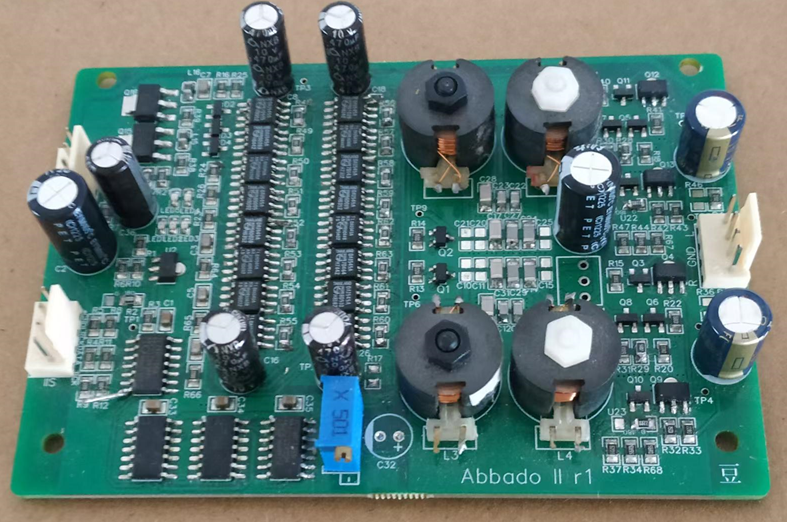Abbado II is my first design to make use of the TDA1545. The reason for the swap of DAC chip I explained in my last log entry - 1545 offers more output current for slightly less supply current. Thus it requires fewer chips and less power to achieve the same SNR as TDA1387.
Abbado II has a slightly modified 'rear end' (meaning I/V and output stage) compared to earlier designs which allows it to operate from a lower supply voltage (9V) - this choice is more economical on power. It is also simpler and contributes less noise due to the removal of one biassing current source. The change to the back end is facilitated by shifting the supply rails to the DAC chips so that their 0V pins hang 'in mid air' between the power rails, their 5V pins connect direct to the 9V rail. The regulators feeding the DACs therefore operate on the negative rail. Because the 0V pin is also the reference for the digital input signals, there is need for some level shifting and I do this in the cheapest (and electrically fastest) way possible - with series capacitors. The capacitors have to be kept charged to +4V, done with the help of clamping schottky diodes. TDA1545 with its slightly unusual input format needs a couple of shift registers to allow Abbado to be fed with the industry standard I2S digital audio format.
Abbado II has a 5th order LC filter for reconstruction duty which takes up a fair amount of PCB space due to the bulk of the P14 inductors. Such a filter approaches a textbook anti-imaging solution when fed from a 2X upsampler - the first image frequencies in 2XOS occur at 68.1kHz and the Chebyshev filter delivers just over -70dB attenuation there.

The output stage remains the SE classA design tried and tested from earlier DACs - this time though there's a resistor selection of output gain to make balanced mode operation a little easier to accommodate. Typically a balanced DAC will output twice the voltage level, on Abbado its possible to attenuate that back to the same level as unbalanced. Balanced mode requires an I2S splitter board to generate the true/anti-phase signal pair for both L and R and calls for two Abbados. The blue trimmer in the picture allows the gains of L and R channels to be closely matched.
 Richard Dudley
Richard Dudley
Discussions
Become a Hackaday.io Member
Create an account to leave a comment. Already have an account? Log In.